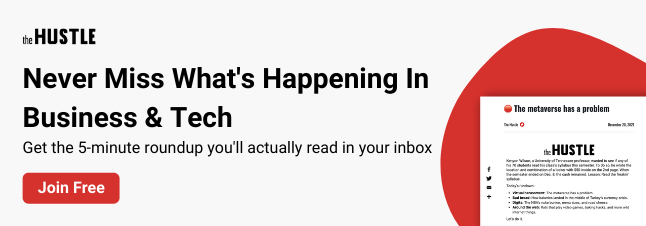Working hard doesn’t necessarily have to mean working more. Tim Ferris was on to something when he popularized the four-hour workweek.

Although that’s not yet a reality, the four-day workweek has seen some success. For example, Microsoft’s Japan office increased productivity by 40% working four days per week.
But shortening the week is only one way to improve rest and work-life balance. Paid time off (PTO) can do the same.
Since the pandemic, 75% of employers are focusing on leave management, and 25% have altered their PTO programs.
Paid time off is necessary (but often not taken)
Taking a break doesn’t come easy for some employees who prioritize work. The phone buzzes while on the road — they’re checking it. Tablet pings while on the beach — they’re on it. Email notification pop-up during Netflix — already replying.
A Kornferry survey shows that while on vacation, 37% of people connect to work multiple times per day. And 60% admit to connecting to work more often during vacation time than on a typical workday.
So what’s holding workers back from relaxation time? Is it inflation? Job insecurity issues? Or maybe a toxic workplace that values “hustle culture.”
Based on the same survey, the top three reasons are:
- Potential for layoffs (15%)
- Fears of work not being done well while away (35%)
- Too much work to do thanks to staff reductions (47%)
Half of workers even admitted to cutting a vacation short due to pressure to perform.
Ways to overcome this in your workplace include:
- Discuss priorities with employees, particularly around work-life balance
- Encourage the usage of PTO days
- Prohibit managers from messaging or calling workers who are on vacation
Well-rested employees have clearer minds and energy to increase or maintain productivity. Overlook this, and you’ll struggle with burnt-out teams and poor performance.
How does PTO work?
A PTO policy is a document that outlines an employer’s procedures and policies regarding employee time off. The policy should specify how much time off there is, how time off accrues, how and when to use it, specific exceptions, and documents required to request PTO.
For example, most companies allow employees to use PTO for:
- Vacations
- Sick days
- Bereavement
- Personal days
- Jury duty
- Voting
The goal of PTO is to give employees a break from work, whether it’s for vacation days or to stay home when they or a loved one is sick.
PTO typically accrues over time, and employees can use it as needed. For example, a company might allow employees to accrue four hours per biweekly pay period. This will give them 104 hours or 13 days of PTO per year.
PTO vs. sick days: What’s the difference?
PTO is time off that an employee can use for any reason, while sick days are specifically for when an employee is ill. For example, PTO can be used for vacations, personal days, doctor’s appointments, or any other time off, while sick days can only be used when an employee is actually sick.
Some employers provide paid sick leave in addition to PTO. Others only give paid sick leave.
According to an SHRM Paid Leave Benchmark Report, 55% of employers offer PTO to full-time employees. And 60% of employers offer paid sick leave to full-time workers.
What is a PTO accrual policy?
PTO accrual is the accumulation of paid time off for an employee. This can be on a daily, weekly, biweekly, or monthly basis. For example, an employer may offer two weeks (10 business days) of vacation per year, and allow employees to accrue one day per month worked for general PTO. This means that an employee would accrue 12 days of PTO for nonvacation uses per year.
What is a PTO carryover policy?
A PTO carryover policy is when an employer allows employees to carry over their unused PTO from one year to the next. For example, if an employee has 15 unused days of PTO at the end of the year, and their employer allows 10 days of carryover, they could add those 10 days to their PTO next year.
What is a PTO cash out policy?
A PTO cash out policy determines how employees can request payment for their unused time off. It should state the maximum hours/days you can cash out, when the money will be paid, and whether there are any deductions.
Check with your state to see if cash out is required at the time of an employee’s termination. For instance, in California, employers are required to pay employees for unused PTO, no matter the reason for their departure from the company.
Here’s a list of the PTO payout laws by state.
What is a standard PTO policy?
Standard PTO policies outline the guidelines for an employer’s PTO program. These policies often include information about how much PTO is offered, how it’s calculated, how long it lasts, and how it’s distributed among employees.
It offers a finite number of days off, unlike an unlimited PTO policy. An unlimited PTO policy allows employees to take time off whenever they need it.
As for determining what days off to offer workers — there’s no “standard” approach. It depends on the company, its culture, and state legislation.
What is a small-business PTO policy?
Small businesses often have fewer regulations than larger companies, allowing them to create more flexible PTO policies.
For example, some may group together vacation, sick, and personal days under one PTO category. Then workers can request time off to take care of their needs (e.g., child care, family emergencies, illnesses).
Other categories small businesses may include in their PTO policy include holiday time, maternity/ paternity leave, and bereavement leave.
How do you create a PTO policy?
PTO policies should match the needs of the company and its employees. Amad Ebrahimi, founder of business educational site Merchant Maverick, shares the following considerations for developing your PTO policy:
- Company culture: If you’re considering an unlimited PTO policy, do your team members feel empowered to take time off? Are leaders committed to modeling that behavior for their teams so employees can feel comfortable using PTO? Unlimited PTO is a great option for a company culture that promotes autonomy and flexibility.
- Cost: With an accrual-based PTO policy, employees are entitled to payment for their remaining PTO balance when they leave the company. Some companies implement a maximum rollover from year-to-year (under different state laws), which could mean paying team members for unused PTO annually.
- Administration: Who will manage the PTO plan? Does your company have a human resources representative, or will the administrative burden fall to the finance department? If you decide to go with an accrual-based PTO plan, accrual and usage need to be tracked accurately and consistently.
Also, determine how employees request time off. Will they need management approval, or can employees use PTO freely? The latter can create issues when too many people take the same days off. To combat this, ask employees to request time off in advance.
Also consider adding PTO options that match the various cultures you employ. For example, offering holiday pay for African American, Asian, and Hispanic festivities. Or going deeper and instilling the maternity/paternity and bereavement leave policies of other countries into your US company’s policies.
For example, in Pakistan, women receive four months of PTO when their spouse passes away. And Pakistani men receive 30 days of paternity leave.
But whatever types of PTO you offer, be sure to clarify the procedures and rules surrounding them. Consider creating booklets and wikis so employees can easily access the information.
PTO policy examples
There are many ways to design a PTO policy. Here’s a glimpse of how large and small companies build and execute theirs.
Toshiba
International tech company Toshiba gives employees up to four weeks of vacation time per year based on tenure, according to its vice president of HR, Kim Jones.
“We have up to 10 days of sick time off, which also includes caring for family members or taking care of urgent personal business or doctor visits. And we observe 13 holidays throughout the year,” she says.
The company also considers diversity and inclusion in its policies to ensure flexibility for its culturally diverse workplace.
Merchant Maverick
Merchant Maverick offers unlimited PTO, doesn’t require teams to submit PTO requests, and doesn’t track time off.
Sounds like a recipe for chaos, but they have everything under control.
“Team members have the freedom and flexibility to plan their work however it best suits them,” says Ebrahimi. “We simply ask that they block out the time in our shared calendars and software, and notify the rest of the company in our designated #out-of-office Slack channel in advance and close to the actual date.”
The question is: Do their employees take time off?
Ebrahimi states that most feel comfortable taking time off periodically, whether as an impromptu personal day or actual vacation. Their leaders also use PTO for their well-being and to encourage others to do the same.
So far, no one’s taken advantage of the policy by taking too many days off. And productivity levels and work outcomes remain positive.
Campfire Labs
This content marketing agency boasts a 32-hour workweek and four weeks (16 days) off per year. It also has paternal leave, extended leave policies, and, to accommodate those with ongoing ailments and disabilities, there are unlimited sick days.
“Our extended leave policy is a relatively new addition,” says Nicole Kohler, operations manager at Campfire Labs. “It covers any illness-related, loss, family emergency, military, court, or similar leaves that are longer than two weeks — and guarantees 100% salary and paid benefits for an additional four weeks.”













